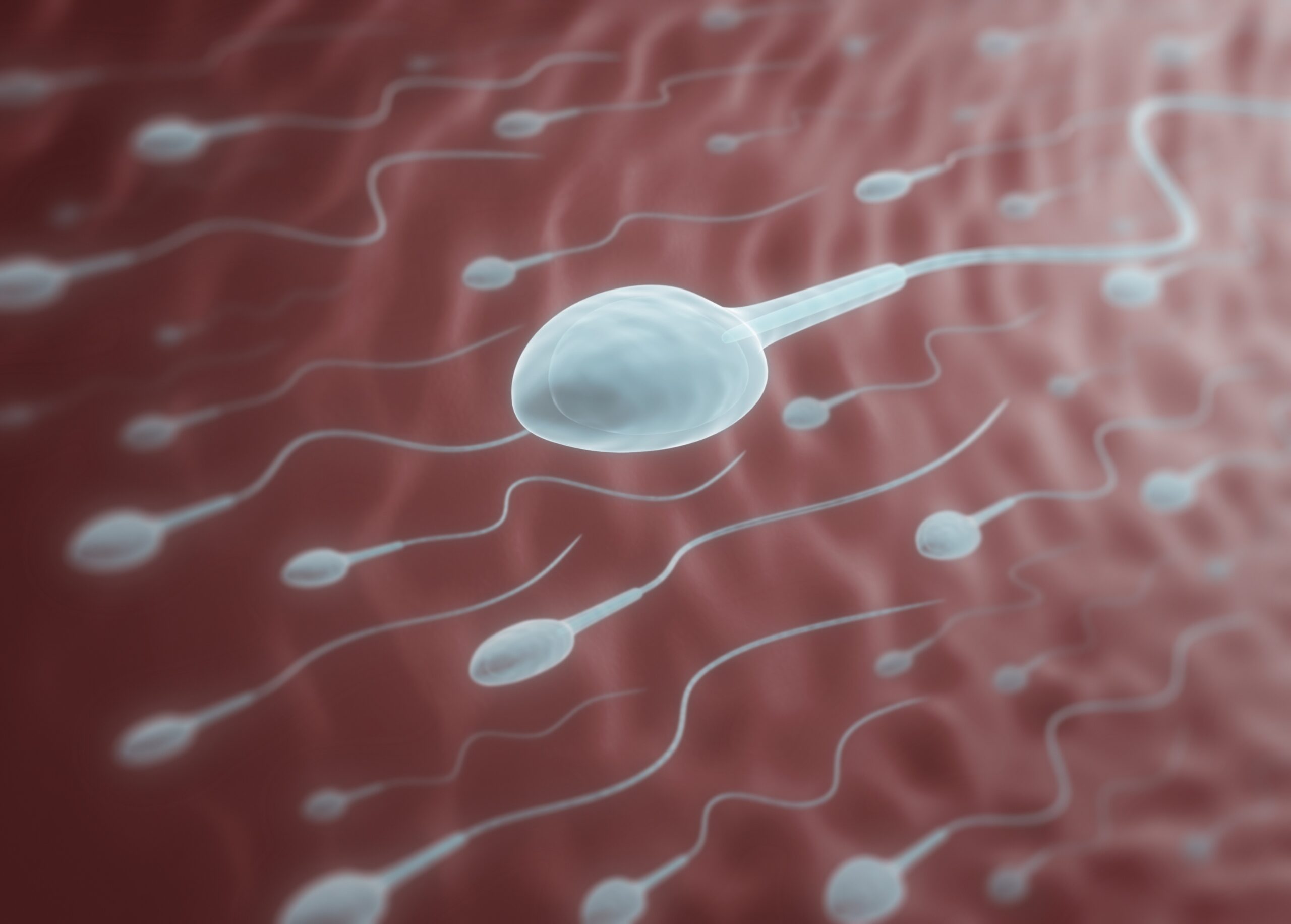In the last 30 years a growing number of New Zealanders have turned to fertility treatment to help them start their families.
Kiwi couples are leaving it later to become parents; some women are choosing to go it alone if they haven’t met Mr Right; and more same-sex couples are having children with the help of donor sperm and IVF.
When Fertility Associates opened the first private fertility clinic in NZ back in 1987, couples had about a 15 per cent chance of having a baby. Now those chances sit at 50 per cent due to leaps and bounds in technology, as well as fertility experts gaining a better understanding of the ideal conditions embryos need to survive and thrive.
This month Fertility Associates celebrates the birth of its 20,000th baby. That’s quite the milestone. We took the opportunity to sit down with the clinic’s fertility experts, Dr Mary Birdsall and Dr Andrew Murray, to find out what developments and advances they’ve seen, as well as what insights and advice they can share with those who might be about to embark on their own journey to start a family.

1. Women now have the power to test their fertility so they can plan ahead
The AMH test is a blood test you can do at any stage in your menstrual cycle that gives you an idea of your egg reserves and how much ‘time you have left’ to have a baby. The test is free in the South Island and costs $90 to $100 in the North Island. Dr Mary Birsdall explains, “While the average woman is going to go through menopause at 51 and might be able to have a baby until she’s 41 we’re all a little bit different so I think it’s always a good idea to individualise what a woman’s reproductive future looks like.
“A great life plan for a young woman would be to do an AMH test in her mid-twenties, and therefore know what your time frame looks like, then plan accordingly – as opposed to doing what I see every day, which is people coming when they’re literally too late and regretting some of the life decisions they might have made.”
Dr Andrew Murray suggests, “You need to think about your last pregnancy, not your first one. If you’re having first baby in your mid to late 30s and you ideally would like two or three it might mean it’s quite tough by the time you’re trying to have that second or third child.”
2. If you’re a single woman who hasn’t met ‘the one’, there are options
The first is Fertility Associates’ donor sperm programme. There is an 18-month waiting list, or you could source your own donor.
The second option is to freeze your eggs. To do this you need to undergo the first half of an IVF cycle, which involves taking some medication for eight to 10 days that will stimulate your ovaries to produce a batch of eggs. The eggs are then removed while you’re under sedation and frozen.
To freeze your eggs, the first cycle costs $9500, the second, $7800, and the third, $6800. Storage fees are $260 a year for up to 10 years and after that you can apply for an extension.
“Ultimately, you don’t know what’s going to happen until you get the eggs out of the freezer,” Dr Birdsall warns. “Not all eggs are going to become babies and we can’t tell when we put an egg in the freezer if they’re going to become a baby. You can give percentages but there’s no guarantee, which is why we encourage women to freeze more than one batch.”
A woman’s fertility begins declining rapidly from the age of 35, so the younger the eggs when they’re frozen, the higher the chances are of success.
3. You can test your embryos to reduce your risk of miscarriage or no pregnancy
Pre-implantation genetic screening (PGS) allows you have your embryos tested prior to implantation to make sure they have the right number of chromosomes.
“In most cases an embryo doesn’t become a baby because it doesn’t have the right number of chromosomes,” Dr Birdsall explains. “And it happens more commonly as a woman gets older.”
PGS can reduce your odds of miscarriage or not getting pregnant at all. Testing costs $1250 per embryo for the first two. After that it’s $1000 per embryo. Testing costs are additional to the IVF cycle costs.
In New Zealand around 15 per cent of people who have IVF are choosing to have PGS. In the States, it’s 50 per cent. Generally, what happens in the States precedes what happens here so Mary and Andrew both foresee that more NZers will embrace this technology.
Watch this video for one couple’s incredible story about how they were helped by Fertility Associates to have their longed-for child:
4. You can be tested to find out if you are the carrier of a rare genetic condition
For $565 you can have a swab test (taken from the inside of your cheek) to find out if you’re a carrier for cystic fibrosis, spinal muscular atrophy or fragile X.
“One in 25 of us carry a gene for cystic fibrosis in New Zealand,” Dr Birdsall says. “We don’t know we have it and we’re not affected by it, but if you partner up with someone else with the gene, that couple has a one in four chance of having a baby with cystic fibrosis. So there are some people that might want to check they’re not going to have a child with this.”
5. And the testing space is about to explode
In the States you can test for 200-300 rare genetic conditions, and Drs Birdsall and Murray predict we will soon be able to here, too.
“That will probably be with us as a service within a year,” say Dr Murray. “I think people will become more focused about what their genes look like in order to have the healthiest child they can.”

6. Time-lapse imaging of embryo development
In the last five years Fertility Associates has introduced time lapse imaging of embryos- a technology whereby a photograph is taken of a patient’s developing embryos every 10 minutes across the five to six days they’re in the laboratory. In monitoring their progress so closely without disturbing them, this enables fertility specialists to know as much as possible about the embryos before they select the best one to implant in your uterus.
7. Fertility treatment is tailored to each individual
Many assume that having fertility treatment automatically means IVF, but the treatment you receive depends very much on the underlying cause.
Explains Dr Birdsall, “First of all you need to figure out what the issue is, because for some couples IVF is going to be the only option. And for other couples there’s going to be a whole lot of other options. So with situations such as blocked fallopian tubes, severe endometriosis or poor sperm quality, IVF is going to be the answer.
“But for women who don’t ovulate or don’t ovulate regularly, the treatment is to take fertility pills that ensure you ovulate. We monitor the woman and tell her when the best time is to conceive, and we see a real lift in pregnancy rates.”
Some individuals may need surgery to remove polyps, fibroids or endometriosis tissue. Sometimes surgery for men is needed to remove a collection of varicose veins around their testes which can cause low sperm count.
Then there is IUI, which is suitable for couples where the woman has healthy fallopian tubes and doesn’t suffer from severe endometriosis, and the male has reasonable sperm quality.
Dr Birdsall explains, “IUI triples a background chance of having a baby, and we do that by giving the woman fertility drugs so that more than one egg is released and then doing some blood tests so we know exactly which days she’s releasing her eggs. On that day the partner gives a sample of sperm and we ‘wash’ the sperm, which means we take the really fast swimmers out. We put them in a tiny tube and insert them through cervix into the uterus so that you get more fast-swimming sperm much higher up in your reproductive tract at exactly the right time of the month.”
IVF is Fertility Associates’ most successful treatment “but with IVF your chances of having a baby are also dependent on egg quality – so the older a woman is the less chance there is with IVF”, Mary warns.
“There are some people whose eggs are literally just not good enough so for those people we do IVF using donor eggs.”
As in the case of sperm donors, there are never enough egg donors. Surrogacy laws are tight in New Zealand; it is illegal to pay egg donors or surrogate mothers.
Watch this video to find out how this couple was helped by Fertility Associates to have their baby:
8. There are important lifestyle factors to consider when you’re trying for a baby
To increase your chances of having a baby both partners need to look after their health. Avoid alcohol, cigarettes and recreational drugs, and limit your caffeine intake. Eat a healthy, well-balanced diet, drink plenty of water and exercise regularly to ensure your BMI is within the normal range.
Dr Birdsall is becoming increasingly concerned about environmental pollutions. “I suspect they’re probably affecting fertility in a bad way.”
9. Male infertility is as common as female infertility
People often perceive the women to carry the infertility factor when a couple struggles to have a baby. But the research shows that the issue is as likely to lie with the male as it is the female
In New Zealand men’s sperm counts have halved, and even though they began to level out in 2007, the trend has not reversed. Dr Birdsall suspects environmental factors to be the reason why.
10. Start with a nurse
Fertility Associates offers an initial free phone consultation with a nurse for those who are not sure whether they need to invest in fertility treatment yet.
“Sometimes people have no idea that some parts of their past history might impact their fertility,” explains Dr Birdsall. “For example, if a guy had a testis that didn’t descend and had an operation as a boy, many men will tell us they’ve had this done but have no idea that this will have a really significant impact on their sperm production.”
The nurses know what sorts of questions to ask to flush out this kind of information and begin to form a clearer picture. Click here to book a free nurse consultation.


-scaled.jpg)